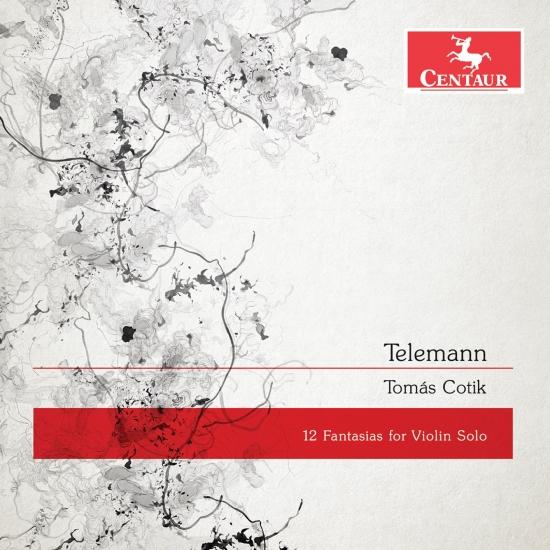Tomas Cotik
62:48
Centaur CRC3949
Click HERE to buy this recording on amazon.co.uk
[Using these links to buy recordings keeps this site FREE TO VIEW]
Quite a few violinists (50+?) have thrown their hats into the ring to tackle these neatly-crafted works, which do clearly befit the definition of Fantasias, breaking rules of form and giving a sense of an improvisatory flow; more than this, we have clever capsules of music expounding the sonata forms of the past, juxtaposed with more progressive Galant elements, plus some suite-dances and rustic sections, as per the final “Giga” movements in the Fantasias nos 2, 4, 9 and 10, that mirror the over twenty closing movements found in the extant Suites. These well-thought-out fantasias come some twenty years after the composer’s first publication (1715) and just after the famous “Musique de Table” 1733, and sit alongside the publication of other fantasias for solo flute and gamba, and the Sonates Corellisantes of 1735. The opening “Capriccio” of the A major work no 5 is conceived within an overt Corellian mode and style. In a printed catalogue of 1735, Telemann listed the violin fantasias as: “12 Fantasias for violin without bass, of which 6 include fugues and are: ‘Galanterien.’” These pieces offer up some real “roller-coaster” mood swings and stylistic changes with some passing lyricism for melodic effect, and some have that “ear-tricking” double-voice effect, found in the flute fantasias too. Here also that famous rustic style closing nos 11 and 12. In nearly all the fantasias, Tomas Cotik has keenly and clearly articulated these modes and moods with deft fingering and technique, shaving off minutes in many, except no 6 in E minor which exceeds all the recordings I own by some two minutes! There’s an often pulsing, strident acceleration and almost “explosive” delivery from this Marc de Sterke (2000) violin with baroque bow, which makes for a formidable display of technical ability, yet this can detract slightly from a more even- tempered approach given by others notably Andrew Manze (1996), Rachel Podger (2002) and Angele Dubeau (1993/5). Maya Magub on the CRD label (2012) held a finely balanced “middle way” with some lovely subtle embellishments. Here, sometimes, I felt the envelope was often being “pushed”, which I dare say would count as sparkle in the concert hall, yet on repeated listening might feel more like over-exuberance, an involuntary frisson! The slower introspective moments were well interpreted, so too the openings of no. 7 and (Dolce) no. 8 (Piacevolmente), yet I found the opening Prelude of the G major (no 2) had oddly applied tremulous “shudders” and the final Menuet from the F minor (no 3) became all rather spikey to my ear! This brings to a head the instant dichotomy of how to interpret these works in a fluent chain of musical ideas that look back to the old and forward to the Galant; each violinist must find their own path and method of delivery within the intended guiding improvisational flow. These versions are unabashedly driven, backed by a slick technical ability, yielding a bold, fleet, forthright ride through the challenging yet rewarding contours of these mixed modes, occasionally dance-infused, and forward-looking Fantasias.
David Bellinger
